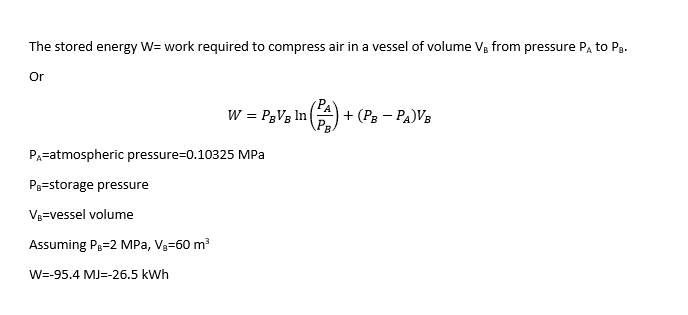Hi All
For a PV project of 5 kW, we will use a CAES.
The preliminary design will consist of a compressor - 2 heat exchanger - Air receiver - air motor - generator - 2 water tanks as a thermal storage units to have an adiabatic systems.
For a 5 kW PV plant, an energy of 20 to 26 kWh is expected.
At this stage I don't have enough information about the components size and I want to start with the air tank size.
I want to study different sizes and different tank pressures which will accommodate a certain amount of energy.
Any help please?
For a PV project of 5 kW, we will use a CAES.
The preliminary design will consist of a compressor - 2 heat exchanger - Air receiver - air motor - generator - 2 water tanks as a thermal storage units to have an adiabatic systems.
For a 5 kW PV plant, an energy of 20 to 26 kWh is expected.
At this stage I don't have enough information about the components size and I want to start with the air tank size.
I want to study different sizes and different tank pressures which will accommodate a certain amount of energy.
Any help please?

